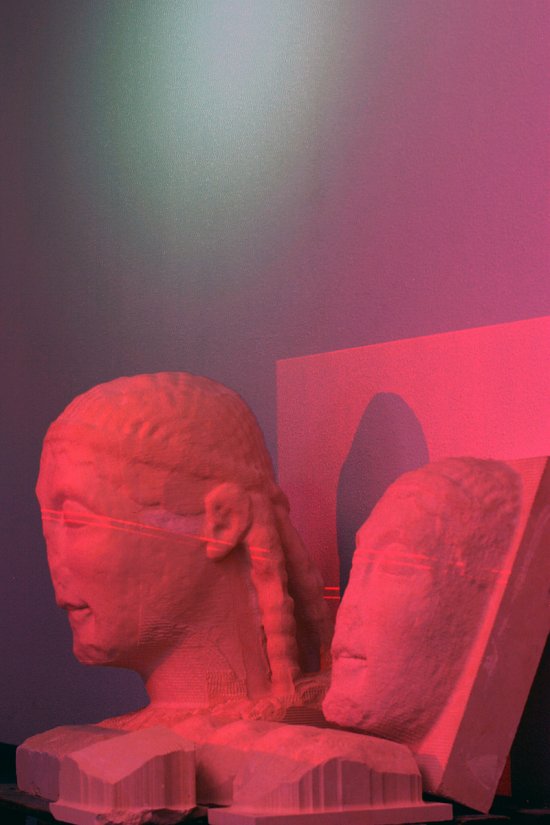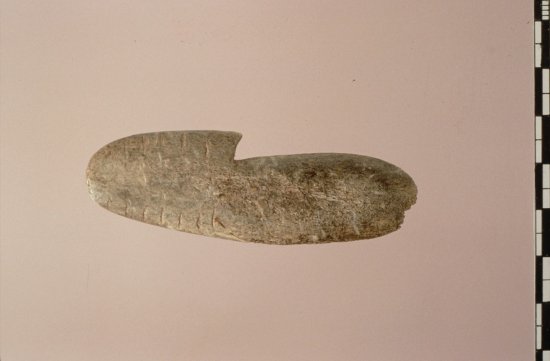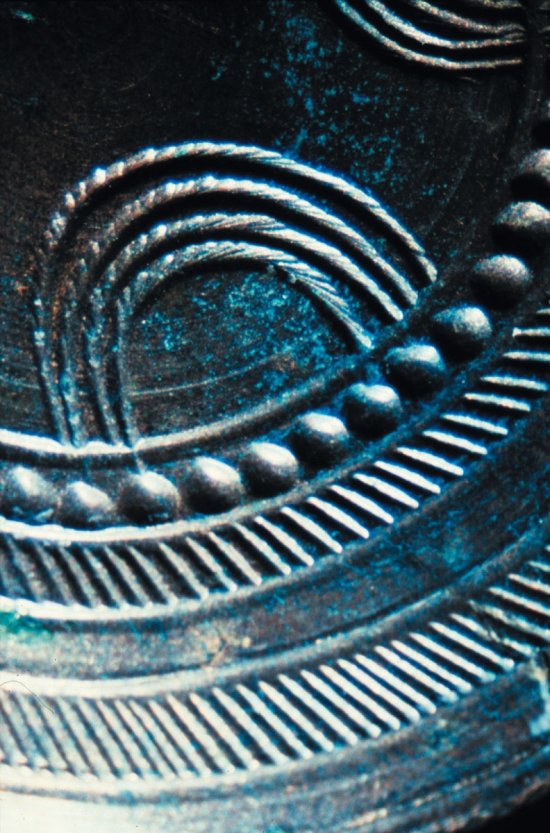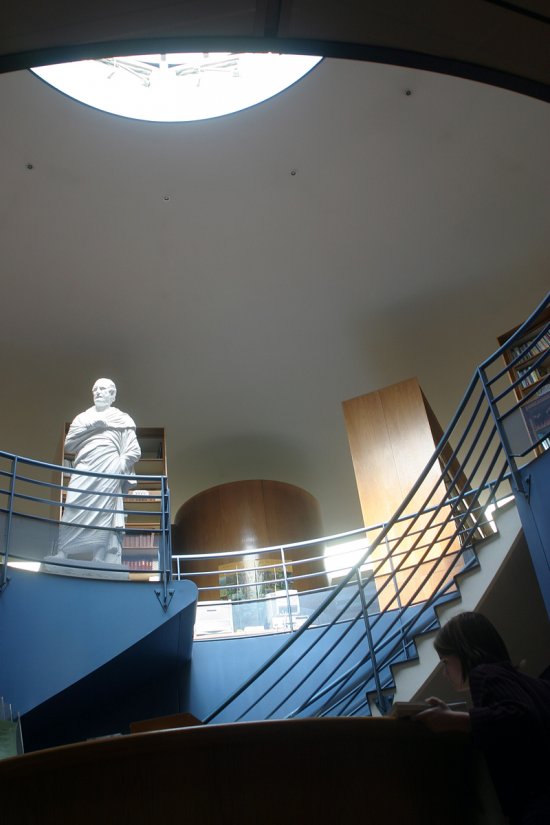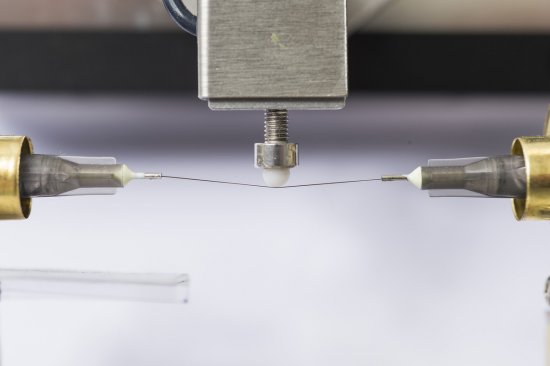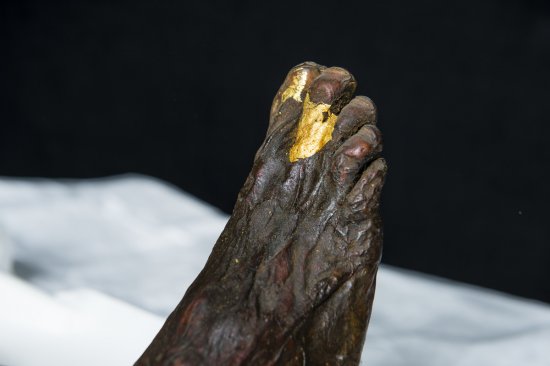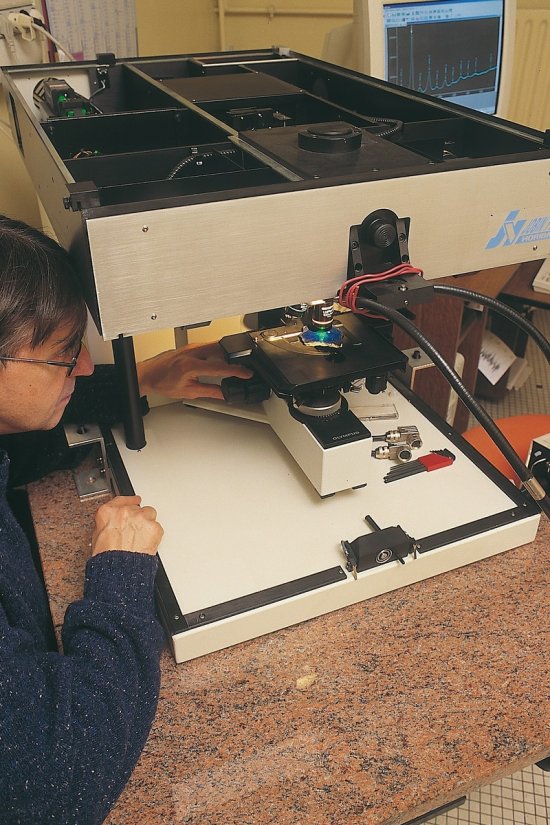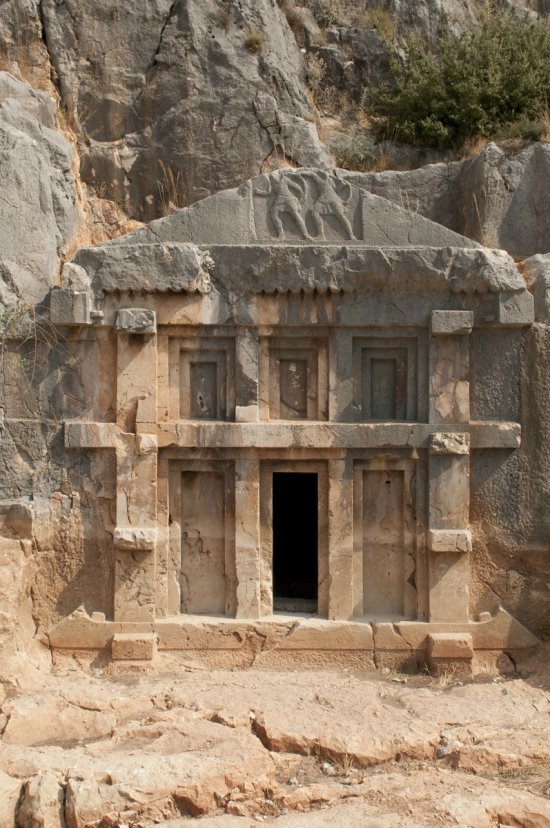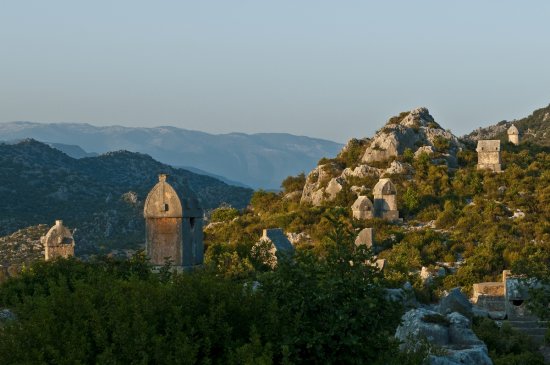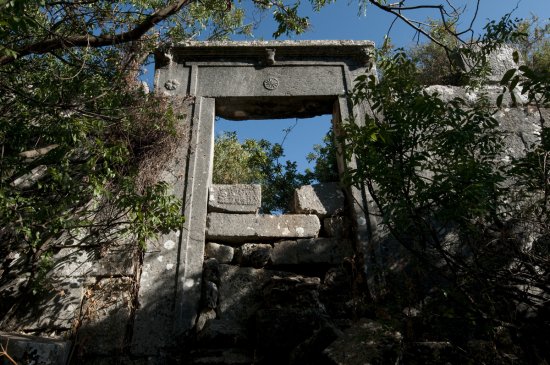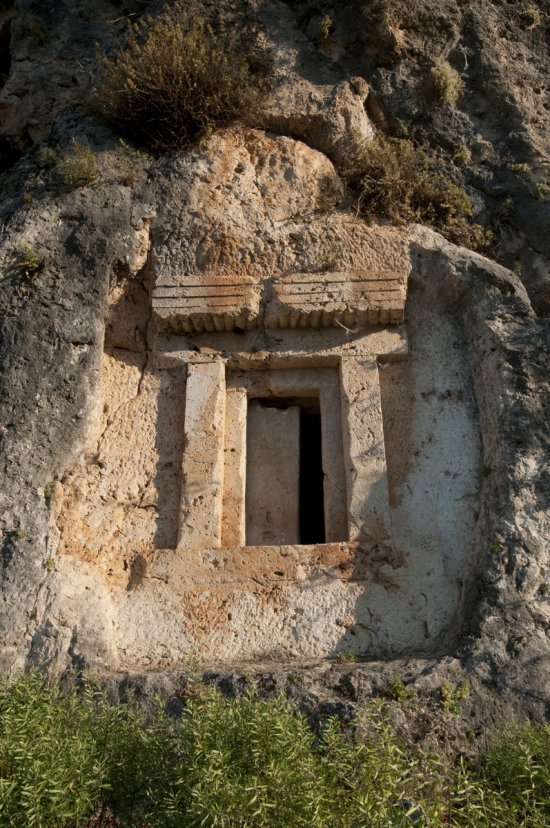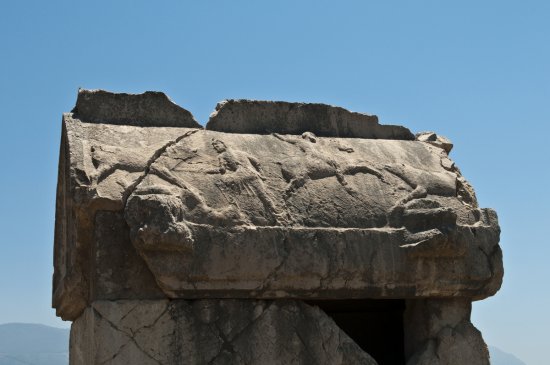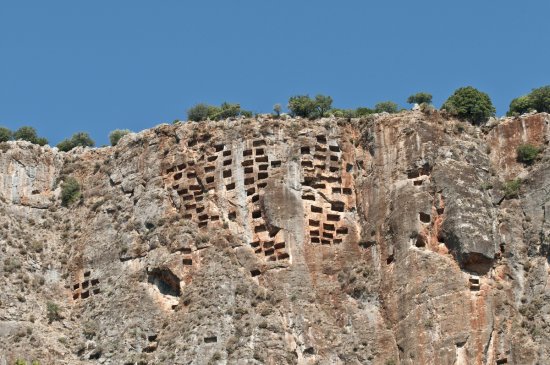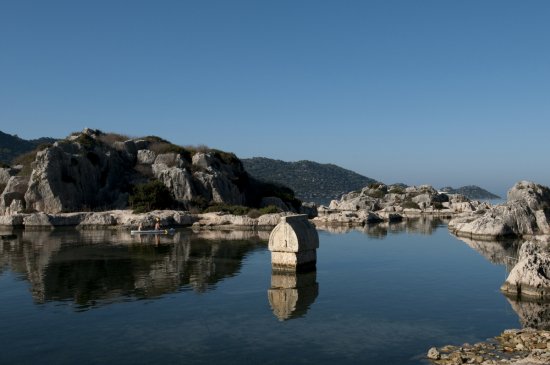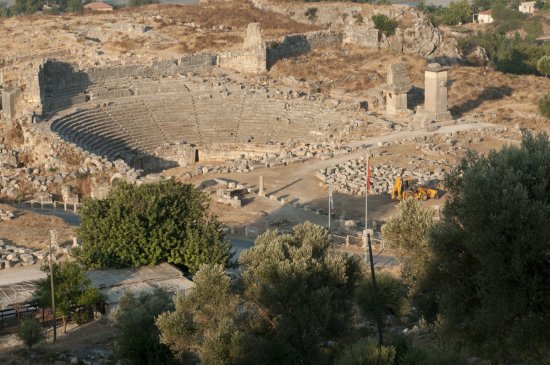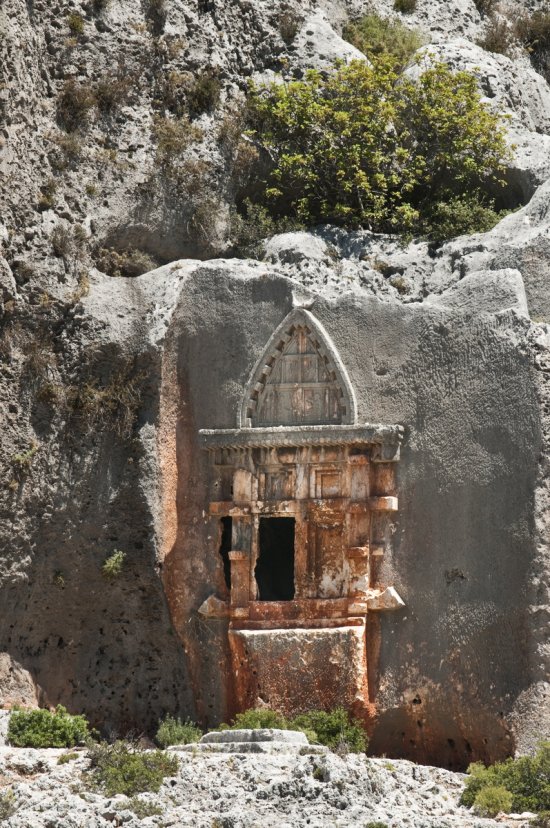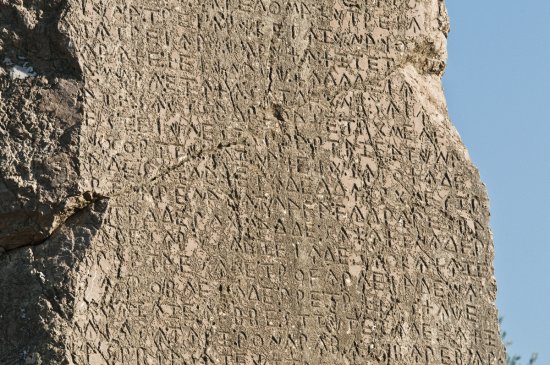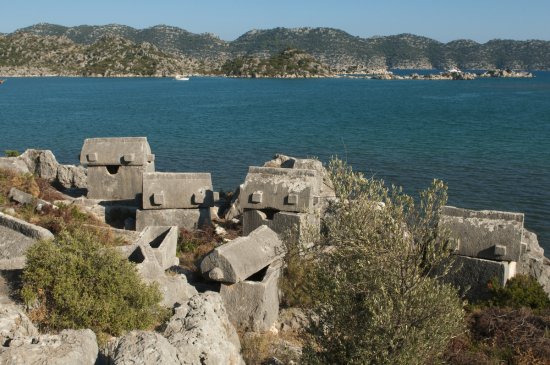© CNRS / MSH Mondes (USR 3225) - 2020
Reference
7315
Thus speaks Tarām-Kūbi, Assyrian Correspondence
About 4 000 years ago, Assyrian merchants established a commercial settlement in the ancient city of Kaneš, within Central Anatolia. They came from Aššur, north of Mesopotamia.
We have come to understand their history through their writings on clay tablets that have stood the test of time: more than 22 500 cuneiform tablets have been unearthed from the archaeological site of Kültepe. How did these Mesopotamian clay tablets arrived in Anatolia and what do they tell us?
The voice of Tarām-Kūbi, an Assyrian woman who corresponded with her brother and her husband in Kaneš, takes us back in time.
Duration
Production year
Définition
Color
Sound
Version(s)
The use of media visible on the CNRS Images Platform can be granted on request. Any reproduction or representation is forbidden without prior authorization from CNRS Images (except for resources under Creative Commons license).
No modification of an image may be made without the prior consent of CNRS Images.
No use of an image for advertising purposes or distribution to a third party may be made without the prior agreement of CNRS Images.
For more information, please consult our general conditions
Transcription
Thus speaks Tarām-Kūbi
Assyrian Correspondence
About 4 000 years ago, Assyrian merchants settled in Central Anatolia. They came from Aššur, north of Mesopotamia.
They established a commercial settlement in the ancient city of Kaneš, within the region of Cappadocia, more than 1 200 km from their homeland.
We have come to understand their history through their writings on clay tablets that have stood the test of time.
ANATOLIA, TURKEY
Kültepe Archaeological Site, the ancient city of Kaneš
archaeological excavations directed by Fikri Kulakoğlu, Professor at the University of Ankara
00:01:22:14
Ah! A shadow.
Remove the dust.
Slowly.
There is probably an archive.
Professor, the tablet is very well preserved.
That is because the house had burned down.
Otherwise it wouldn't have been so well preserved.
The signs should be fine.
I hope philologists will not complain.
Its envelope should also be there.
Why do we wrap it in a napkin?
- So that it doesn't become moist.
- To absorb the moisture, pardon.
- Two of them came out whole, one of them is broken.
-Yes
Give me two more things.
Put them there. Give me those napkins.
00:03:07:17
“Say to Aššur-mūtappil
Thus speaks Waqqurtum”
“Say to Aššur-Taklāku
Thus speaks Tariša”
“Say to Pūšu-kēn
Thus speaks Lamassī”
“Say to Innaya
Thus speaks Tarām-Kūbi”
00:03:36:09
Tarām-Kūbi, is my name
It is on these tablets of clay where I have written my letters. From the start, the addressee and the sender are stated.
These letters were sealed in envelopes of clay and they travelled along with the merchandise on the back of a donkey between Mesopotamia and Anatolia.
This is how I wrote to my brother.
00:04:30:16 Letter from Tarām-Kūbi and Šīmat-Aššur to their brother, Imdī-ilum
Say to Imdī-ilum: thus speaks Tarām-Kūbi and Šīmat-Aššur
Here, within the city of Aššur, we have consulted the women dream interpreters and diviners, as well as the spirits of the dead, and through them, it has been revealed that the god Aššur ceaselessly issues you this warning: “You have too much love for silver, yet you despise your own life. Can you not comply with the god Aššur and thereby please him in the city of Aššur?”
It is urgent that you come as quickly as you can, the moment you have read our letter, to meet with the god Aššur at his temple so that you may save yourself.
Why have you not sent me the proceeds from the sale of my textiles?
00:05:08:02
Everything that is known about me come from these letters. Archeologists have found about fifteen of my letters.
I wrote regularly to my brother Imdī-ilum and my husband Innaya, because I needed the silver from the sale of my textiles to tend to our home in Aššur, take care of the children, and to ensure we had enough to eat.
00:05:40:03
My brother left Aššur to trade textiles and tin in Anatolia. He stayed to live there, in a city called Kaneš. Kaneš, which today you call Kültepe.
« Kültepe » in Turkish means « the hill of ashes ». This hill of earth resembles all of the archeological sites of the Ancient Near East. You can see many of them today in Iraq, Syria and Turkey… You need only to look at the horizon. At the time, we built with mud clay bricks, and when buildings collapsed, we rebuilt over the ruins.
On this hill, which was once surrounded by an outer wall, administrative and religious buildings of the city can be found. Assyrians lived with the Anatolians at the bottom of the hill. Only a small part of the city, that was excavated by archeologists, is visible, the rest is still buried beneath the fields.
00:06:48:09
Like my brother, my husband left Aššur to settle in Kaneš.
As for me, I made the textiles that were sold in Anatolia and managed our affairs in Aššur… It was about 4 000 years ago.
I believe that the archeologists have unearthed nearly 22 500 tablets from this site, but there are so many more that they are likely to unearth…
00:07:17:14 Interview French
Les premiers explorateurs sont venus tout simplement parce que sur les bazars de Kayseri et d'Istanbul à partir de 1880 sont apparues des tablettes cunéiformes, dont on savait qu'elles venaient de Cappadoce. Donc les gens étaient intrigués et les Occidentaux ont essayé de retrouver la source de ces tablettes cunéiformes.
Early explorers arrived very simply because in the Bazaars of Kayseri and Istanbul, starting from 1880, cuneiform tablets began to appear, and it was known that they came from Cappadocia. People were intrigued and Westerners tried to find the origins of these cuneiform tablets.
00:07:45:05
Cuneiform writing, which the scholars of the time were just beginning to decipher, was characteristic of Mesopotamia. Why were these tablets in Anatolia? So far from home?
This is why explorers have come here to excavate. But beneath the earth they have only found buildings. Explorers excavated on the hill without knowing that a town existed below. From time to time, they bought tablets from the peasants that lived in surrounding villages who kept silent about where they came from. One day, a taxi driver, perhaps a bit drunk, broke this silence and revealed that the tablets could be found in the fields.
Since then, many tablets have been taken from the fields and are now exhibited in your museums.
00:08:57:18
This was our writing. Formed by cuneiform signs, meaning in the shape of wedges. Vertical wedges, horizontal wedges and heads of wedges.
These signs have made it possible for us to write our language, Old Assyrian, a dialect of Akkadian.
The signs were printed in fresh clay with a reed stylus. We then placed the tablets in the sun to dry. They were then covered in envelops of clay on which we imprinted our seal.
00:09:37:11 Interview Cecile Michel
« Enveloppe scellée par Ennanatum, fils de Titinatal ; scellée par par Šu-Suen,
fils d'Ilimittī, scellée par Adad-damiq, fils de Pilah-Ištar. »
Ça c'est intéressant, c'est un engagement avant mariage, visiblement un engagement qui traine un peu dans la durée. Donc pour que la jeune fille ne soit pas célibataire à vie, on fixe une limite au futur marié pour se présenter et épouser la jeune femme. Donc là on a l'enveloppe, et cette enveloppe a été visiblement ouverte il y a beaucoup d'années ici au musée et ils en ont extrait la tablette. Qui correspond à cette enveloppe. Donc sur l'enveloppe on a du texte et l'impression de plusieurs sceaux. Alors, comme c'est un contrat, souvent pour les contrats on recopiait presque l'intégralité du texte sur l'enveloppe. Pour qu'il garde sa valeur légale, on l'ouvrait pas, mais comme le texte était copié dessus, on savait de quoi il s'agissait.
« Envelope sealed by Ennanatum, son of Titinatal; sealed by Šu-Suen, son of Ilī-imittī, sealed by Adad-damiq, son of Pilah-Ištar. »
This is interesting, it is an engagement before marriage, an engagement that had gone-on for too long, so that the young girl would not be single all her life, a time limit was fixed on the future husband to present himself and marry the young girl. Here, we have the envelope, and this envelope had been opened many years ago here at the museum and they extracted the letter from the tablet, which corresponds to this envelope. On the envelope, there is text as well as impressions of several seals. Often for contracts, they copied almost all of the text onto the envelope itself, and so that it maintains its legal value it wasn't opened, but as the text was copied on it, they knew what it was about.
Alors ce texte explique que :
« Adad-damiq a épousé la fille de d'Ištar-nādā. Il n'épousera pas une autre femme. S'il devait en épouser une autre, alors il paiera en pénalité 1 mine d'argent. S'il ne vient pas dans les deux mois et ne prend pas soin de sa femme, ils donneront la fille à un autre époux. Adad-damiq ne devra pas saisir en justice celui qui a épousé la jeune fille. »
Donc voilà, là on a l'enveloppe du contrat, et on voit bien qu'une petite tablette comme ça, était conservée dans une enveloppe relativement beaucoup plus grande.
So this text explains that:
« Adad-damiq has married the daughter of Ištar-nādā. He will not take another as his wife. If he marries another, then he will pay a fine of 1 mina of silver. If he does not come within two months and take care of his wife, they will give the young girl to another husband. Adad-damiq shall not seek justice against he who married the girl. »
So, here we have the envelope of the contract, and we clearly see that a small tablet like this one was preserved in an envelope that was relatively much larger.
00:11:18:24
Archaeologists have found only about 40 marriage contracts at Kaneš, because we kept them within our homes in Aššur.
There are all kinds of texts that can be found in these tablets: letters, divorce contracts, lists of merchandise, testaments, acknowledgment of debts… Treaties between the Assyrian and Anatolian authorities…
00:11:41:12 interview - French
Donc les principaux types de textes que l'on a, ce sont des contrats, des contrats commerciaux, des contrats à valeur juridique, mais aussi beaucoup de memoranda, de notices personnelles comptables, totalement anonymes, non signées, ce qui complique parfois un petit peu l'étude, tout type de listes diverses et variées. Et 35 à 40 % de notre documentation, ce sont des lettres.
Alors pourquoi des lettres ? Eh bien tout simplement parce que les premières générations de marchands assyriens qui sont arrivés ici ont laissé leurs femmes, leur famille à Aššur, leur ville mère, qui est à vol d'oiseaux, à peu près à 1200 kms d'ici. Pendant de très longues périodes. Au début, ils venaient, avec leurs caravanes de marchandises, ils négociaient leurs marchandises et ils repartaient. Mais ça durait assez longtemps. Et puis petit à petit, ils ont commencé à s'installer localement, et ils revenaient de moins en moins souvent.
Donc ces femmes, et leurs collègues, dans la ville mère, à Aššur, pouvaient correspondre avec eux par courrier.
The main types of text that we have are contracts, commercial contracts, contracts with legal value, but also a lot of memos, personal accounting records, completely anonymous, which sometimes complicates the study, all types of lists. And 35 to 40 % of our texts are letters.
So, why letters? Because the first generation of Assyrian merchants that arrived here left their wives and their family in their mother city Aššur, which is as the bird flies, about 1200 kilometers from here, for very long periods. At first, they came with their caravans of merchandise, they negotiated their merchandise and then they left. But, it lasted quite some time. And then little by little, they started to settle locally, and they returned home less and less often.
So, these women, and their colleagues, in the mother city Aššur, could correspond with them through letters.
00:12:43:07
Aššur is my city, it is located on a rocky cliff on the border of the Tigris River north of Mesopotamia, which today is in northern Iraq 100 kilometers south of Mosul.
At that time, Aššur was not yet the great capital that it would become 500 years later, but a city-state governed by merchants, a city where everyone – or almost everyone, engaged in trade.
00:13:10:14 interview - English
When the Assyrians left Aššur, they would first cross the Assyrian desert with their caravans, which is a flat and relatively dry area until they reach the great river the Euphrates. That river they have to cross with ferries or with rafts. And after doing that, they had an arduous journey across the Taurus, wild and high mountains.
The Assyrians brought their goods to Anatolia on donkey caravans. A donkey can carry 65 kg. They were carrying textiles of luxury quality. These were very fine and expansive wares. And on the side, they would carrying tin. We don't know where the tin came from. But probably they were brought to Aššur where the Assyrians bought them from very far away on the east, where is today Afghanistan and Kazakhstan.
They brought tin in such large quantities, that it's hard to believe that all of it was consume locally, here in Turkey. We don't know where this tin ended up. We know that the copper that was typically blended with to produce bronze was also procure here on mines here in Anatolia, in very large quantities. And the Assyrians merchants were the ones who traded it.
00:14:35:05
We are in the Bronze Age. Trade of these metals were vital. We imported tin into Anatolia and it was melted with local copper to obtain bronze, and with this metal, we fashioned numerous utensils used in daily life, dishware, tools, and weapons.
00:14:59:00 Letter from Husārum to Pūšu-kēn
Šu-Kūbum is bringing you 2 talents 10 minas of sealed tin, 40 kutānū textiles, which also includes those that were used for wrapping, 2 black donkeys and 17 minas of tin for travel expenses. Once the goods have been brought down from the palace and the taxes have been paid, Šu-Kūbum should not tarry, even for one day, and he should bring me my merchandise.
00:15:25:22
Merchandise lists, expense accounts of the caravans… numerous tablets that reveal how this trade was organized.
It should be said that the quantities of merchandise that we sent to Kaneš were spectacular: around 4 tons of tin and 3 800 textiles that travelled each year!
00:15:48:15 Letter from Imdī-ilum to Ikuppiya, Ahu-waqar and Puzur-Ištar
The 26 kutānu textiles from Aššur-emūqī's caravan that Aššur-ṭāb took out, were lost in the mountains of Māma. Send me your report and let me know if the caravan has compensated him for the loss.
00:16:03:10 Letter from lmdī-ilum to Annalī, Aššur-idī and Amur-ilī
Why are you constantly writing me and telling me that you have added 13 sacks of your textile rolls over my packages that have already been secured onto the backs of the donkeys? You are mistreating my donkeys and this angers me! This is of utmost importance! Feed the donkeys well and do not be sparing with the fodder, and do not add your rolls of textile on top of my packages.
00:16:33:21
We had to pay taxes to the Anatolian authorities to transport merchandise in safety. Our caravans could take routes that were guarded and our goods were guaranteed according to their declared value. But some merchants invented all sorts of ways to avoid paying taxes and increase their profits and did not hesitate to detail their fraudulent practices in writing.
00:16:58:22 Letter from Buzazu to Puzur- Aššur, Ṭāb- Şilli-Aššur, Aššur-bāni, Adad-bāni and Ikuppaša
If the way is safe on the back route, it is by this back route that my tin and textiles of high quality must reach me by caravan. If the back route is impractical, they should bring the tin to Hurrama and let the inhabitants of Hurrama carry one talent each into the city until all of the tin has been brought in; or else, make packets of 10 or 15 minas and let the caravan staff carry them into the city hidden beneath their under garments.
00:17:28:19
Fraud can take different forms.
This is how my husband Innaya ventured into trafficking iron and lapis-lazuli.
Trade of these highly precious materials in our day was regulated by the authorities. His merchandise was confiscated and he was put into prison.
00:17:48:09 Letter from Tarām-Kūbi to her husband Innaya
With regard to the lapis-lazuli, the court cases have been delayed by order of the court. At present, our court case has not yet been brought before the city assembly of Aššur. (…)
Once the judgement has been passed, our detailed report will be sent to you, do not be impatient, strengthen your witnesses, certify your tablets and send them to me on the next caravan. Send me one of your servants. Your house and your children are well.
00:18:22:01
After crossing the desert and mountains, the caravans arrived on the Central Anatolian plateau, this fertile plain that dominates Mont Erciyes.
00:18:34:10 Interview - French
Alors Kaneš était le centre, stratégique, des différents comptoirs de commerce qui ont été installés par les Assyriens sur le plateau anatolien, et on compte à peu près, selon qu'on est au 19e-18e siècle, entre 35 et 40 comptoirs de commerce assyriens. Mais Kaneš était le centre névralgique de ce réseau commercial, c'est-à-dire que c'est à Kaneš qu'arrivaient les caravanes d'ânes lourdement chargées en étoffes et étain depuis Assur, et c'est là que les caravanes étaient désassemblées, les marchandises étaient dédouanées au palais local et après étaient soit vendues sur place soit envoyées dans les autres comptoirs de commerce par vente à crédit des marchandises à des agents, qui devaient essayer d'obtenir le maximum de bénéfices et ramener les capitaux aux marchands installés à Kaneš.
Kaneš was the strategic center of the different commercial settlements that were established by the Assyrians on the Anatolian plateau, and at that time, there were between 35 and 40 Assyrian commercial settlements. But, Kaneš was the center of this commercial network, meaning it was at Kaneš where the caravans of donkeys heavily heavily laden with textiles and tin arrived from Aššur, and it was there where the caravans were disassembled, the merchandise taxed at the local palace, and then were either sold on site or sent to other commercial settlements through credit sales of merchandise to agents, who were charged with obtaining the best possible return and then bring the silver earned to the merchants in Kaneš.
00:19:26:19
Once the merchandise was sold, smaller convoys returned to Aššur that brought silver or gold.
We waited for these precious metals with impatience.
00:19:39:04 Letter from Tarām-Kūbi to her husband Innaya
You had told me that you had left bracelets and rings that I could sell to buy food. (…) But I could not find them. When you left, not a single shekel of silver was left for me, you took everything from the house and left it empty. Since your departure, a terrible famine took over the city of Aššur, and you had not thought to leave even a liter of barley. Yet, I still need to buy barley for our sustenance (…) And what type of extravagance do you accuse me of having committed? There is absolutely nothing for us to eat, and you believe that we could somehow buy whatever we want on a whim? I have collected everything that I could possibly gather and I have sent it all to you. And now, I live in a house that is empty. It is time to buy grain. Send me the silver from the sale of my textiles so that I can buy 10 measures of barley.
00:20:32:07
The voyages of my husband became fewer and far between over time, I wrote him incessantly and demanded his presence. But in vain. He died in Kaneš, where my tablets were preserved in his house and were buried with time.
00:20:46:07 Interview - French
Alors, le principe de fouille, c'était de fouiller, de façon exhaustive, chaque année une, deux, ou trois maisons. Chaque assyriologue qui travaille sur Kültepe, on est moins d'une dizaine dans le monde, une petite dizaine, est en charge d'un lot d'archives spécifiques exhumées pendant une année dans une maison particulière.
Excavations were done each year, of one, two or three houses.
Each Assyriologist that works on Kültepe, there are less than a dozen in the world, is in charge of one archive that was excavated over a period of a year within a particular house.
00:21:09:20
In each house, a room was used for storing merchandise and tablets. Our tablets were organized on shelves, in wooden boxes, or in earthen jars placed on the ground. They were sorted: letters on one side, accounting or legal documents on another… Clay labels indicated the contents of the containers.
00:21:32:06
In this house, the archives of the merchant Šalim-Aššur were found.
00:21:37:16 Interview - English
Fairly large house, excavated in 1994… And they found an archive of just about 1200 texts in the house. Which is a very large archive. And it reflects the life of a family that we can follow, actually, in no less than 5 generations.
The main person in the family for a long time, Šalim-Aššur, when he died, his 2 sons got involved in a long long and complicated lawsuit over the inheritance. And they were 2 brothers and a sister, and the brothers fell out with each over.
I think we have more than 100 individual texts that tell us about aspects about that lawsuit.
This is one of the interesting aspect of the archive, that it gives us an enormous amount of information about legal matters.
In other families, we have both men, but especially women, who write very unusual and very personal texts.
00:23:03:00
If our letters were at times unusual compared to those of the men, it was because we also had to manage strange things in Aššur.
We buried our dead beneath the floors of our homes and in this way worshipped our ancestors. But in Aššur, because the men were often absent and could not honor them, we were alone with the spirits of the dead that at times terrorized us.
00:23:28:09 Letter from Tarīš-mātum and Bēlātum to Pūšu-kēn, Puzur-Ištar, Usur-ša-Aššur, Ilabrat-bāni and Iddin-Ištar
Here, Bēlātum has fallen ill, due to our father's votive offerings of silver and we are plagued by demons and the spirits of the dead!
Speak to Pūšu-kēn so that he may sell all of the tin and textiles that he is able to, he should then seal the silver and send it here to save your lives and ours! Here, the god plagues your father's house!
00:23:52:24 Interview - French
Les archives de Kaneš ont fourni un nombre assez conséquent de lettres de femmes et ces lettres de femmes sont souvent très intéressantes parce que contrairement aux lettres d'hommes qui sont plutôt des lettres d'affaires, les lettres de femmes laissent transparaitre des sentiments. Ce sont en plus des lettres qui utilisent un langage vernaculaire, plutôt une langue parlée et donc qui sont très très vivantes. En plus ce sont des lettres qui nous documentent sur la vie quotidienne, sur la vie de ces femmes à Assur et comment elles sont devenues, à la tête de leur maisonnée, en charge de beaucoup de choses. Outre les enfants, l'éducation des enfants, il faut s'occuper de tout le domestique, de la maison elle-même qui nécessite des réparations. En plus elles sont à Assur, elles sont en relation avec les partenaires, ou les agents, les représentants de leurs époux, et avec les autorités, donc elles sont aussi amenées à régler des affaires avec les collègues de leur mari, de leur père, etc. Donc ce sont des femmes qui sont extrêmement actives et dont on peut reconstruire les activités grâce, entre autres, à cette correspondance.
The archives from Kaneš provided a significant number of letters from women, and these letters from women are often very interesting, because, unlike the letters written by men, which were mainly commercial letters, the letters from women were emotionally revealing. They were also letters that use a vernacular language, a spoken common language and were therefore very lively. In addition, they were letters that document everyday life, the life of women in Aššur, and how they became the head of their households, in-charge of many things. Apart from children, the education of children, they also had to manage domestic work and take care of the house itself, which needed repairing. They were also in Aššur, they were in contact with the partners, or the agents, the representatives of their husbands, and with the authorities, so they also settled business with the colleagues of their husbands or fathers. So, these women assumed very active roles and we are able to reconstruct their daily activities thanks to their correspondence.
00:25:18:06 Interview - French
Alors, cette petite lettre est assez extraordinaire ; c'est une lettre qui mesure pas plus de 5,5 cm/5,5 cm et qui comporte une cinquantaine de lignes, donc c'est très dense. C'est écrit tout petit. C'est une lettre qui a été envoyée par une femme qui s'appelle Ummī-Išrara.
Ummi-Ishrara était une femme consacrée au dieu Aššur et donc elle ne s'était pas mariée et elle habitait à Aššur. Et elle écrit cette lettre à sa mère, mais surtout à sa soeur Šalimma. Parce que cette dernière a quitté son mari, a quitté ses enfants pour aller vivre à Kaneš auprès de sa mère.
Ummī-Išrara, du fait qu'elle est fille consacrée, estime qu'elle a un devoir moral envers sa famille et surtout sa soeur et donc elle lui fait une longue lettre de réprimandes et de morale et donc il faut impérativement qu'elle vienne habiter avec son mari et ses enfants à Aššur.
This tiny letter is quite extraordinary. It measures no more than 5.5 cm by 5.5 cm and has about 50 lines, so it is very dense. It is written very small. The letter was sent by a woman named Ummī-Išrara.
Ummī-Išrara was a priestess of the god Aššur and so she was not married and she lived in Aššur. She wrote this letter to her mother, but especially to her sister Šalimma, who had left her husband and her children to go live with her mother in Kaneš.
Ummī-Išrara, because she was a priestess, believed that she had a moral duty to her family and especially her sister, and so she wrote her a long letter of admonishments and moral lessons. It was imperative that her sister returned to live with her husband and children in Aššur.
00:26:25:07 Letter from Ummī-Išhara to her sister Šalimma
The day that Pilah-Ištar arrived here, and since you did not return with him, your husband became extremely unhappy and for five days, he did not leave his house. Write to me if you are thinking of finding another husband and if you are no longer interested in your own, so that I may know your intentions! If that is not the case, then prepare to leave and return at once.
If you do not return, you will bring me in conflict with your husband and you will leave your children to waste away, and as for me, I will never again mention your name! You will cease to be my sister and you should never again write to me!
00:27:03:10
Historians know very little about the women who were consecrated and their religious duties within the temple. They were single and had an important social status. What is certain, is that the rich merchants wanted their oldest daughter to be consecrated to the god Aššur.
But the majority of women were occupied making textiles.
00:27:38:19 Letter from Lamassī to her husband Pūšu-kēn
If you are my brother, if you are my master, then take heed of what I ask of you. Be a man of honor and cut short your obligations. I had entrusted a heavy weighted textile to Aššur-malik during his previous journey, but he has not given me its value in silver. This time, he carries for you a seal of lapis-lazuli of the finest quality. When you send me my silver, add a little wool, as wool in Aššur is expensive.
00:28:17:00
Lamassī was the wife of Pūšu-kēn, one of the most important merchants from Kaneš. Like all of us, she made textiles that her husband sold in Anatolia and earned silver for this work.
Our textiles of luxury quality were renowned for their wool and their fine weave. They clothed the court of various Anatolian cities of the time.
00:28:44:10
Scholars today seek to understand how we went about making our textiles. Unlike our tablets, our textiles did not survive through time nor did the looms. There is very little trace of this work and the traditions have been lost.
00:29:11:00
We knew how to choose the wool, recognize its qualities, such as length and fiber fineness.
00:29:21:17
The sale of our textiles was the lifeline of our family business. It was considerable work that occupied all of the women in the house: from the older women to the very young girls, and also the servants.
00:29:38:05 Letter from Lamassī to her husband Pūšu-kēn
Why do you always write to me: “The textiles that you send me each time are not good”? Who is this person living in your house and denigrating the textiles that I send to you? For my part, I do my best to make and send you textiles so that for every trip at least 10 shekels of silver can reach your house.
00:29:59:15
We made different types of textiles, from very thick to very fine. Some merchants would send precise instructions to their wives.
00:30:15:04 Letter from Puzur-Aššur to Waqqurtum
One must beat the textile on one side and take care not to pull out the fibers. Its thread weave should be close and pressed together. Add a mina of wool more per piece of textile than what you used in the textile you sent me previously, but the textile must remain thin. Let them, only very lightly, beat the other side of the textile. If there is still too much hair like fibers, they can pluck them as they would for a kutānum textile.
For the textile that was made in the Abarnian fashion that you sent me, please do not send me any more like it again! If you would like to make more make them in the same fashion as the one I wore when I was there. If you are unable to make fine textile, I was told that there are many for sale where you are. Buy them and send them to me!
00:30:57:03 Interview - French
Et là c'est une donnée extrêmement intéressante parce qu'il donne les dimensions d'une étoffe de type kutanum : « Une étoffe que tu tisses, une fois finie, doit mesurer 9 coudées de long et 8 coudées de large », c'est-à-dire 4m par 4m50. C'est des coupons d'étoffe extrêmement grands. Et cette mention de dimension, elle se trouve là, sur le côté gauche.
This information is interesting, because it gives the dimensions of a typical kutānum-textile: “A textile that you have woven, once finished, should measure 9 cubits long and 8 cubits wide.” In other words, 4m by 4 m50. These pieces of fabric are extremely wide. And the reference to the dimensions can be found here, on the left edge of the tablet.
00:31:32:22
How much time was needed to make these very large textiles?
Before spinning the wool, we must first wash and prepare it. You need to then spin around 36km of wool thread to make a single textile of this size! Which (it) requires 3 months of work for a single person!
We could then weave the textile. A woman could produce 2 and half textiles per year. And since all of the women at home participated, we were able to make 25 textiles each year.
00:32:12:14
These textiles were very expensive! With 20 or so textiles, we could earn up to 4 minas of silver per year, which corresponded to the cost of a small house in Aššur…
00:32:26:04 Letter from Lamassī to her husband Pūšu-kēn
If you are my master, do not be angry with me as I have not sent you the textiles as you requested of me. Our little girl has grown and it was also necessary to make heavy weighted textile for the carriage. I also needed to make garments to dress the children and the servants. It is for this reason that I was not able to send you the textile that had been promised. In another caravan, I will send you all of the textile that I am able to make.
00:32:55:15
Our textiles can be seen in the miniature drawings of the seals, on the envelopes of contracts or of letters, but also on the seals of vessels containing merchandise or food products. We would roll, on wet clay, a small cylinder made of stone, on which a miniature design was engraved.
Frequently, Assyrian style drawings depicted garments with vertical lines, and those that were in the Anatolian style had diagonal lines.
The men fixed the textile on their body with a cloth sash or a metal band. Warriors would hang their weapons on their belt. Women would hold their dress together with a long metal pin, at times decorated with a precious stone.
00:33:44:00 Interview – French
On a ici une enveloppe qui est en 2 morceaux, que j'ai pu recoller. Et ici, eh bien c'est le déroulé du sceau cylindre de Tariša. On voit bien, la séquence se répète. Ici on a un bovin qu'on retrouve ici. Avec un petit dieu qui est juché sur le bovin. Donc Tariša possédait son sceau personnel.
Y'avait des femmes qui possédaient leur sceau au même titre que les hommes, donc ça prouve bien qu'elles pouvaient initier des affaires, passer des contrats, envoyer du courrier. C'était des femmes qui agissaient au même titre que les hommes et qui pouvaient effectivement mener des transactions financières. De même, il est possible que certaines de ces femmes, tout comme pas mal d'hommes, écrivaient par elles-mêmes leur propre courrier.
Là on a une étude en cours sur les mains de scribes et la paléographie, donc on ne peut pas encore dire si c'est Tariša qui écrivait ses lettres, mais on est en train d'étudier. Et plusieurs de ces lettres représentent effectivement la même main.
Here we have an envelope that are in two pieces, which I was able to put back together. And here, is the impression of the seal belonging to Tariša. We clearly see that the sequence repeats itself. Here we have an ox that we also find here. With a small god that is perched over the ox. So Tariša had her own personal seal.
There were women who had their own seals, just like the men, which proves that they were able to initiate business dealings, finalize contracts and send letters. These women assumed the same roles as men and could actually carry out financial transactions. It is also possible that some of these women, like many of the men, wrote their own letters.
We are currently studying paleography and the scribes' handwriting, so we are not yet able to say if Tariša wrote her own letters, but this is an ongoing study. In fact, several of her letters show the same handwriting.
00:35:01:21
The Assyriologists ask if we wrote our tablets ourselves.
It is true that there were professional scribes in Aššur.
Their tablets are easily identifiable: they are perfectly formed, the writing meticulously done. But we as merchants, wives and sisters of merchants frequently wrote.
Assyriologists can detect our spelling and grammatical errors and errors in syntax…
00:35:26:10 Interview – French
Ces femmes font preuve d'une grande autonomie, à la fois morale et financière, et tous les préjugés qu'on pouvait avoir sur la femme dans l'Antiquité sont à nettoyer et balayer par cette documentation qui montre en fait que la femme tenait un rôle fondamental, non seulement au sein de sa famille, mais dans la société.
These women demonstrate a high level of independence, they were both self-determined and financially independent. And all of the preconceptions that we could have about women that lived in ancient times should be washed away because of these texts that show that women in fact held important fundamental roles, not only within the family, but also within society.
00:35:53:04
Tariša was the sister of Aššur-taklaku. Their father passed away leaving them with an enourmous debt. She writes several letters to her brother who lived in Kaneš. In Aššur, Tariša must manage their financial problems.
00:36:07:03 Interview - French
Tariša est en relation avec les financiers et les créanciers du père à Aššur et donc devait faire face effectivement à tous ces créanciers.
Alors elle a écrit un certain nombre de lettres qui sont particulièrement intéressantes parce elle explique qu'il ne faut pas que les ancêtres soient entachés du fait qu'ils n'arrivent pas à régler cette situation difficile.
Tariša is in contact with her father's investors and creditors in Aššur and so had to deal effectively with all of these creditors.
She wrote a number of letters that are particularly interesting because she explains in them that their father's house and the ancestors should not be marred because they are unable to find a solution to this difficult situation.
00:37:56:12
I knew Tariša very well, she lived for a little while in Kaneš and she would send money to me and Lamassī. It was in this way that we were able to conduct our own transactions.
Unlike Tariša, I never travelled to Kaneš… but historians have fashioned a view of life in Kaneš at that time.
00:38:17:19 Interview - English
Well you have seen the site itself. And it is not perhaps so easy when you are there to see what this was. But if you introduce all the knowledge that we have from the texts… I mean you can imagine... the donkeys... You can imagine the big streets where the carts would pass by and there would be a lot of noise. It would probably stink and be very unpleasant to a modern nose to be there.
You have to understand that the texts are sort of everyday practical texts. They do not write anything that is not really concerned with a practical matter.
Very occasionally you hear that for instance somebody was having a lot of drinks with an Anatolian gentleman, that must have been a bar somewhere where they could go and get thoroughly drunk and have an argument. And this is, very occasionally things like that come out. I just saw the other day a letter which was about a young man who was to be married and his sister who was very angry with him wrote about him that he should not, once he had married this girl, he should not come back and say “I only did it because I was drunk”.
00:40:06:12
The merchants would sometimes go to a tavern where beer made from barley was sold. This was our basic beverage. It was mainly the women who kept the tavern and made the beer. And in every house, women prepared beer every day.
00:40:23:05 Letter from Tarām-Kūbi to her husband Innaya
The harvest season has arrived. Send me silver so that they may store grain before your arrival.
The barley bread needed to make beer that I prepared for you has become rancid. (…)
This is of great importance! Once you have heard the contents of this letter, come, look towards Aššur, your god, and your home hearth so that I may see your eyes while I still live.
00:40:45:16 Interview - English
So you have to imagine, you have to put it in yourself when you walk there. And this is perhaps not so easy when you just see a few remains of walls and rooms where you had no idea what went on in those rooms and so on. But when we concentrate on the texts and we try to draw out what is there, we can actually get a fairly good impression of what life was like in this place.
00:41:24:16
Archeologists found more than tablets at Kültepe, but also numerous ceramic objects, at times odd with human forms or animal heads… jewelry, weapons, tools, tableware made from bronze…
And numerous idols… These idols are typical of Kültepe, they are made from alabaster with one or several heads, the body in a form of a circle. They are quite old, several centuries older than our time when we Assyrians traded with Anatolia.
00:42:20:15
More than 30 idols have been excavated from the earth, all have been unearthed in the same room. Nearby, an enormous official building was uncovered, some of its rooms seemed to have been used for storing merchandise.
00:42:39:19
If these idols are typically Anatolian, the excavation has brought other surprises. Archeologists have discovered more than a 1000 labels in clay, imprinted with Mesopotamian seals.
These labels were used to seal merchandise and demonstrate that exchanges with Mesopotamia existed well before we arrived in Anatolia. Our ancestors had already traded with Kaneš.
00:43:13:12
In the roughly 30 commercial settlements that we established in Anatolia, only 3 were discovered by archeologists. And in Aššur our homes are still buried beneath the earth, with our tablets.
So many tablets are waiting to be deciphered.
00:43:40:06
Through our tablets, our lives have travelled through time, and have reached you in your world today. But the Archeologists have found only a small window into our lives: 50 years of correspondence between Aššur and Kaneš.
It is fortunate that we wrote on clay…
